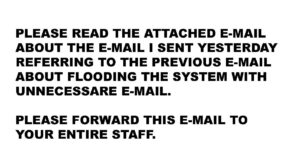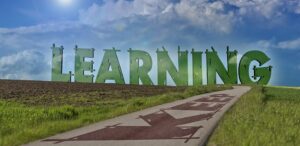
Barriers to School = Barriers to Growth
Pam Sornson, JD
October 4, 2022
While understanding how “Future of Work” (FoW) concepts impact industries, businesses, and educational institutions, it’s also critical to comprehend how those concepts apply to and impact the individual. The FoW terms “high-quality jobs,” “upward mobility,” and “career education” refer to occupational outcomes for society’s workforce, the millions of working individuals whose efforts contribute to and build the economy. When those workers are un- or underemployed, they suffer personal losses while the community suffers economic losses. Consequently, it’s important to recognize, measure, and remediate those non-employed losses as systems design strategies to reclaim economic success following periods of financial calamity.

The High Costs of Un- and Under-employment …
A myriad of economic, climate-related, and public health crises has thrown millions of people out of work over the past decade. While many have either returned to their old job or found a new career in the new economy, others have not fared so well. For a variety of reasons, some people have not yet returned to the workforce and remain unemployed or have returned in an employment capacity that does not reflect their qualifications or skill set – they are underemployed. The reasons former workers stay on in these economically suppressed situations vary. “Unemployed,” for example, can mean many things. Federal standards define “unemployed” as those who haven’t found work in 15 weeks of searching and those who’ve stopped looking after many weeks of not finding employment (‘discouraged’ workers). The “underemployed” class includes marginally attached workers (seasonal or gig workers) and those who are employed only part-time due to adverse economic conditions in their industry or occupation.
Both classes of restricted employment create challenges for the person and their community:
Unemployed people tend to spend less, so they contribute less to the overall economy. Additionally, that lack of employment also signals a lack of tax payments, which causes the loss of government revenues.
Many unemployed people also draw unemployment insurance benefits, which are financed primarily by taxes on businesses.
The un- and underemployed classes also suffer personal setbacks because of their situation. Research indicates that these distressed workers express more negative job attitudes, lower job satisfaction, and overall lower life satisfaction. The suppressed economic and career situation can also contribute to the deterioration of physical and mental health.
Additionally, being underemployed causes long-term restricting career effects, too, that can last for a decade or longer.

… While Job Openings Remain Unfilled
Even though many people remain unemployed, the number of unfilled job positions in the country has been growing. As of August 2022, companies posted more than 11 million job openings across America in virtually all sectors of all industries. Studies show that two job openings were available for every unemployed person. Further, survey respondents also shared why they were not taking available work.
For some, available positions didn’t pay well enough to sustain their lifestyles; some of them commented that they earned more monthly income from unemployment benefits than they would earn if they were working.
Others indicated that there were no jobs available near them.
Many claimed a lack of career advancement or development opportunities was also preventing them from finding the work they wanted.
Still others indicated that they did not have access to well-paying jobs due to employer bias and discrimination.
However, in many cases and because of evolutions in the global industrial complex, many un- and under-employed workers lack the skills that are now in demand in many emerging occupations. The “state” of work is changing as technology replaces human labor or renders entire workforces obsolete. Companies struggling to fill open positions also struggle to provide training for potential employees to learn the new skills those positions demand.
Making things more problematic is the fact that, in too many communities, there are no educational facilities or schools prepared to provide ‘just in time’ training for emerging skills. In many cases, the skills required are considered the “middle” skills related to vocational activities, and the number of dedicated vocational training schools has declined steadily for decades. Even when colleges and vocational schools are available, too many potential workers don’t understand what they offer or can’t overcome long-embedded institutional barriers that prevent them from gaining access.

Unnecessary Institutional Barriers to Education
Unfortunately, unlike the private sector, which was able to pivot quickly toward new ways of working as the COVID-19 pandemic continued, the schools best suited for providing middle-skilled training facilities, notably America’s Community College systems, were mired in legacy protocols due to outdated regulations and bureaucratic rigidity.
Outdated Regulations
Most often, institutional administrations are mandated to pursue and apply articulated rules and regulations. These regulations emerged over time as the school encountered a need for a specified policy and protocol in specific situations. At the time, the asserted framework made sense because it responded directly to a pain point experienced by the school, its students, or its community. However, the global application of a rule, regardless of the situational context of the moment, can often cause difficulties. For example, many Community College programs sometimes require full-time attendance or mandatory participation in program elements. Standards such as these two can prevent learners from engaging with those programs because they can’t attend when commanded by the school rule.
Bureaucratic Rigidity
Compounding the difficulties caused by outdated regulations are administrations that refuse to respond to emerging situations. Instead, they fall back blindly on long-established procedures as the only appropriate action to take at any time. For example, even while millions of teachers and students were compelled to embrace “online” learning, school boards and administrations were still tracking student “seat times,” “instructional minutes,” and “teacher contact hours.” The leadership at the Community College level isn’t immune to the pressure of maintaining bureaucracy. Their hesitation in innovating in the face of workforce and labor demands has caused many potential students to look elsewhere for their future.
These topics – institutional barriers to higher education – are the subjects of the upcoming “Future of Work Conference” to be held at Pasadena City College on November 8, 2022. Panelists from industry, government, and higher education will be discussing how their element of the workforce development initiative can innovate beyond rigid bureaucracy to meet the needs of learners who need help.


